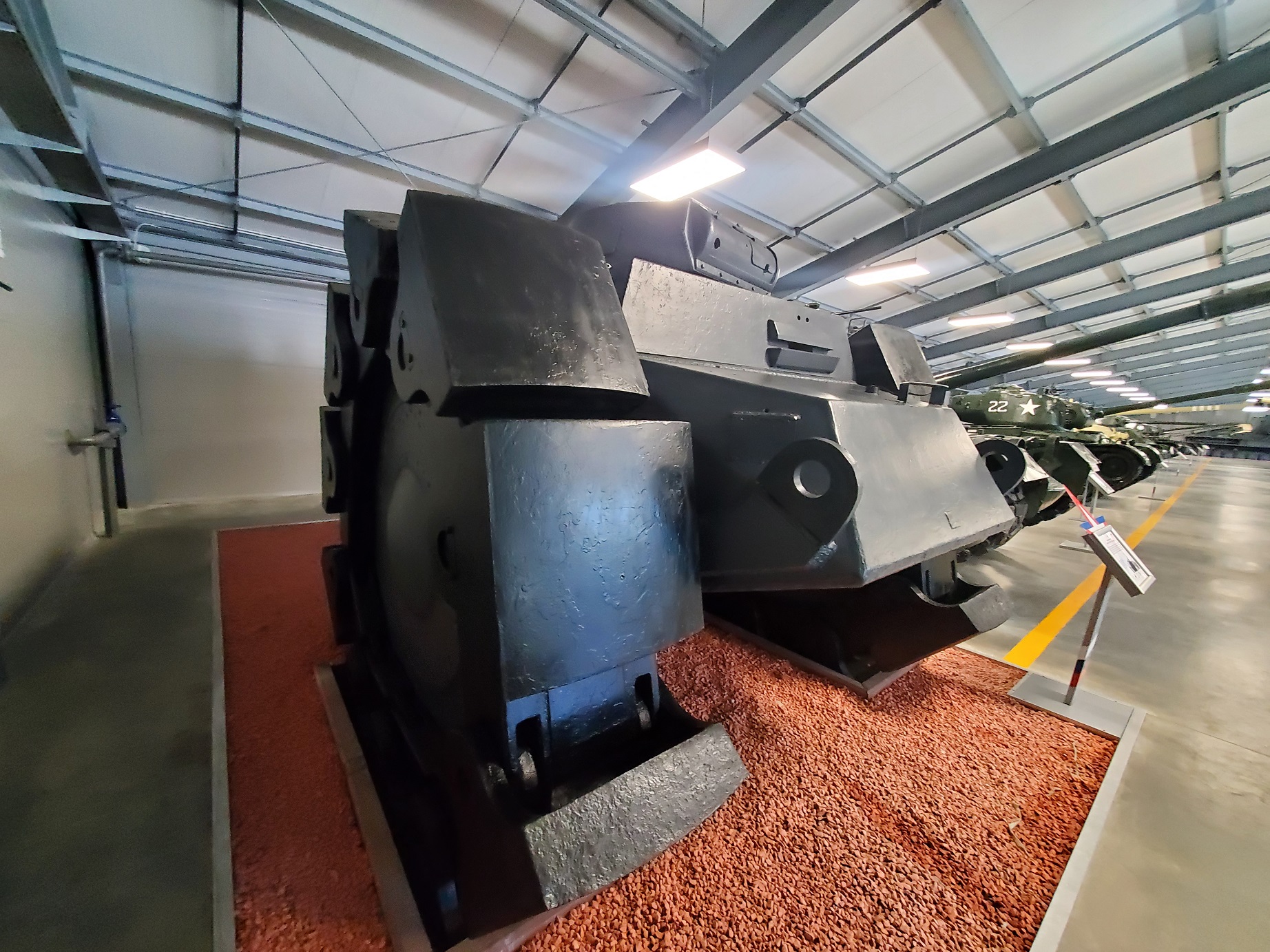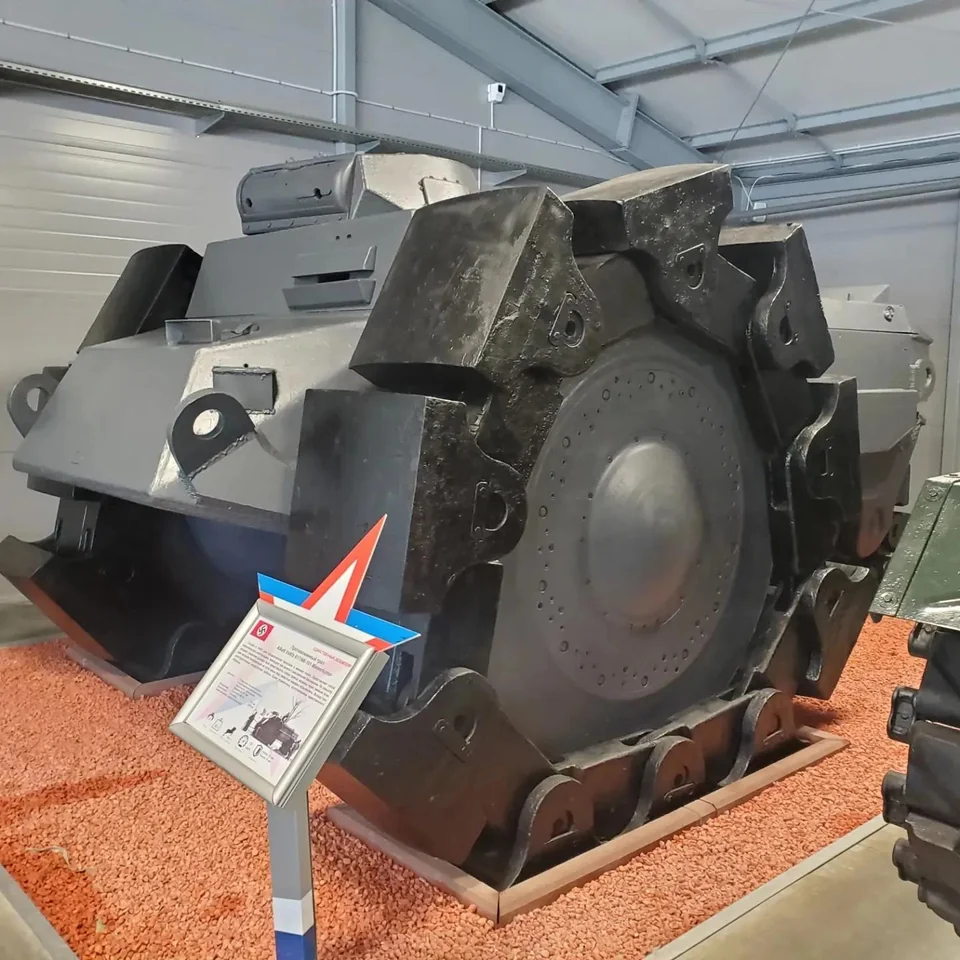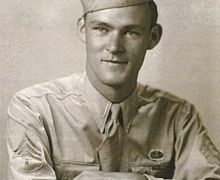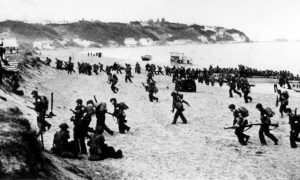The body of the Minenräumer was supposed to consist of a large number of armor plates of various shapes and sizes, interconnected by welding. The frontal part of the hull consisted of several sheets installed at different angles to the vertical, and had a characteristic appearance. The upper frontal sheet of the hull was equipped with a driver’s inspection hatch. The central part of the hull had a rectangular section, and the stern was tapered. In addition, the bottom of the aft hull was noticeably raised relative to the rest of the sections. To enhance protection, the bottom received spaced armor with an external 40 mm sheet and an internal part 20 mm thick. In addition, the bottom was reinforced with additional stiffeners.

For self-defense, the minesweeper received a turret with machine guns. This unit was borrowed from the Pz.Kpfw.I light tank without any changes and was mounted in front of the roof. Armament consisted of one MG34 machine gun. The design of the tower made it possible to fire within wide sectors.
In front of the hull was placed the department of management with the jobs of the driver and commander. The driver had to observe the situation through the hatch of the front sheet, and the commander had at his disposal viewing devices of the rotary tower. To access the habitable compartment, hatches were used in the roof of the hull and turret.
Some transmission units should have been located near the control compartment. The engine was placed in the center of the hull, and the feed was given to the control systems connected to the chassis units. In the roof of the hull, a set of hatches and gratings was provided for servicing the engine and other units of the power plant.
As the basis of the power plant, a Maybach HL 120 carburetor engine with a power of 300 hp was proposed. It was installed in the center of the hull, with a shift to the stern. Through the main clutch, an eight-speed gearbox and other units similar to those used on tanks of that time, the torque had to be supplied to the drive wheels.
The most interesting feature of the Räumer S project was an unusual undercarriage designed to perform the duties of a roller trawl. The promising minesweeper received three relatively large wheels of the original design. Two wheels with a diameter of 1.9 m were attached to the sides of the front of the hull. A special chain of complex shape was movably fixed on their outer surface. It was proposed to mount special metal blocks-shoes on this chain. During the movement, ten blocks had to alternately fall to the ground and serve as a support for the car. The dimensions of the bearing surface of the “shoes” of the front wheels were 630×630 mm.
The only rear wheel had a diameter of 1460 mm and was also equipped with a chain with ten support blocks. In this case, blocks of smaller sizes were used – 630×315 mm. The rear wheel was mounted in a U-shaped fork on a swivel base. Due to the rotation of the rear wheel around the vertical axis, the car had to change direction and thereby perform maneuvers.
The total length of the prospective minesweeper Alkett Minenräumer was 6.5 m. The width along the outer surface of the shoe blocks reached 3.17 m, the height was 2.8 m. Due to the use of the original undercarriage with the maximum possible lifting of the hull, the clearance reached 800 mm. It was assumed that this would to some extent reduce the impact of the blast wave and fragments on the hull. The combat weight of the vehicle exceeded 38.25 tons.
The unusual appearance and non-standard undercarriage of the minesweeper were due to the need to solve the task in a specific way. It was proposed to carry out mine clearance with the Räumer S as follows. The car had to go to the minefield and move along it, keeping the direction of movement. A heavy armored vehicle with an original undercarriage was supposed to run into explosive devices and provoke their detonation. The dimensions and strength of the support-boots, according to the calculations of the authors of the project, made it possible to withstand the detonation of anti-personnel and anti-tank mines. If necessary, it was possible to replace worn-out “shoes” with new ones.
When the found ammunition was blown up, the shock wave and fragments should have been delayed by the metal elements of the undercarriage. Not delayed fragments were supposed to fall into the bottom of the hull and stop them. The double bottom with spaced armor was also intended to protect the crew and units from the shock wave of the explosion.
After the minesweeper Alkett Minenräumer passed through the minefield, three 630 mm wide strips cleared of ammunition were to be formed. Two large front wheels formed a wide track, and part of the gap between them was “processed” by the rear wheel. At the same time, however, two sections of such a width of about 630 mm remained between these strips, on which potentially dangerous objects could remain. Thus, the new type of minesweeper was a track type system and left a passage suitable for the movement of various armored vehicles or infantry, but requiring special attention.
According to some sources, the only prototype of a promising minesweeper was built by Alkett in 1942. In the future, apparently, the machine passed some tests, after which it was left without work. Subsequent events suggest that during the tests, an experienced minesweeper could not show himself as a good and effective means to deal with enemy mines. For this reason, the car was sent to storage, where it was until the end of the war.
Various versions are known of how the only prototype of the Räumer S machine became a trophy of the Red Army. It was previously mentioned that this car was delivered to the Kursk region in 1943, and after the start of the offensive of the Soviet troops, not being able to evacuate, they buried it. There were also versions according to which the car was abandoned during the retreat in Belarus or Poland. However, in fact, the minesweeper was discovered much later in Germany.
In the spring of 1945, the only minesweeper Alkett Minenräumer was discovered at one of the German factories, where it was idle after the completion of the tests. It is noteworthy that during the retreat, the German troops did not try to damage or destroy this armored vehicle. This suggests that it was considered unsuccessful and not worth the effort and time spent on destruction. Thanks to this decision of the enemy, Soviet specialists were able to study an interesting sample and draw some conclusions.
It is known that no later than the summer of 1947, the Soviet military not only studied the design of the minesweeper, but also tested it. It turned out that the captured vehicle has a number of serious shortcomings that make it difficult to operate and worsen its main characteristics. So, the mobility of the machine with a complex undercarriage left much to be desired. In addition, it was too large and noticeable for enemy artillery, which could interfere with making a passage in a minefield. 40-mm sheets could only protect the car from small arms and small-caliber artillery. Armament in the form of a finished tower with a machine gun was also considered unsuccessful. Due to the high height of the wheels with “shoes”, firing in the side hemispheres was difficult.
The impossibility of making a continuous passage a few meters wide was also a reason for criticism: as already mentioned, three wheels could only neutralize sections 630 mm wide with similar gaps between them. Nevertheless, it was decided to test the minesweeper in practice. A vehicle with a crew, towed by a tank, was brought to a training minefield. The design of the undercarriage and hull withstood the explosion of an anti-tank mine, but the crew received a shell shock from the blast wave. After this, the tests were completed.
The results of the Soviet tests were mixed. Indeed, the minesweeper Alkett Minenräumer could deal with mines of various types and make passages in barriers. However, there was a great risk of hitting the car with enemy artillery, and in addition, the crew risked contusions or other injuries when relatively powerful ammunition was detonated under the wheels. The practical application of such a technique was not possible.
After completing the tests at the Soviet test site, the German minesweeper returned to storage again without any real prospects. Subsequently, it was transferred to the armored museum in Kubinka, where it is still kept. This unusual museum exhibit still attracts the increased interest of visitors, but it could not interest the military. As a result, an interesting and unusual project based on non-standard ideas did not reach practical application and did not give any real results. In addition, the original architecture and the principles of operation laid down in it have not found application.


















